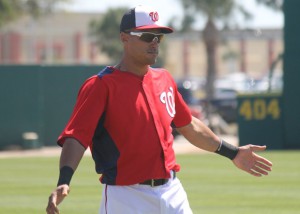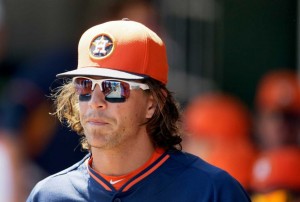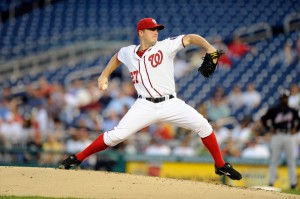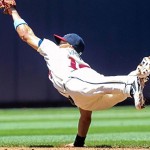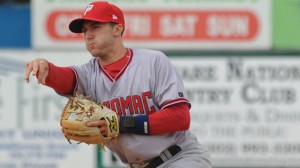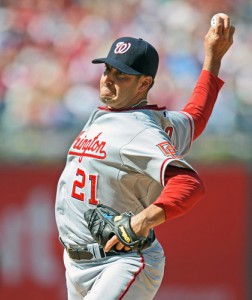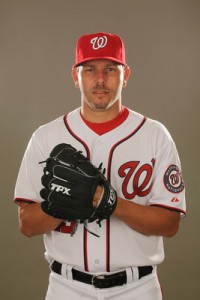When former Nat Ian Desmond signed, he became the final Qualifying Offer-attached player to come off the Free Agency board for the pre-2016 season. So its time to publish our recurring “Are Qualifying Offers working” post. We first visited this topic ahead of the 2014 season and again prior to the 2015 season.
I don’t think i’m “burying the lede” by saying that, No, Qualifying Offers are not working (at least as far as the players are concerned). But lets look at the results of this past off-season’s free agents with compensatory draft pick attachments and do some analysis (fyi, from here on out “Qualifying Offer” will be abbreviated QO):
Here’s my QO Worksheet in Google Docs, which tracks all the QO-offered candidates going back to 2012 and is the basis of a lot of this analysis.
Here’s some summary stats for this year’s QO candidates:
- 20 Free Agents were offered QOs heading into this past off-season. That’s a significantly higher number than in any of the year’s past (9 after the 2012 season, 13 after 2013 and 12 after 2014)
- 3 Took the QO to remain with their original team (Brett Anderson, Colby Rasmus and Matt Wieters). This represents the first time that anyone has actually taken a QO and, frankly, was something I never though we’d see. The players union has convinced players to not act rationally to such an extent that I was sure that there was an unstated agreement to never take a QO. After all was said and done though, I’m sure there’s probably 4-5 more players who probably wish they HAD taken the QO. As it stands, Anderson, Rasmus and Wieters all get huge raises and nice healthy “pillow contracts” to re-establish value for the following off-season.
- 3 more eventually Re-Signed with their QO-offering team (Chris Davis, Marco Estrada and Alex Gordon). I’d only qualify one of these three as really being a significant re-signing; Estrada’s 2015 salary was $3.9M and he declined a $15.8M QO. I guess you could argue that Gordon’s market was depressed by the QO … but I also think he was reticent to “leave home” and leave a team at the top of the game.
- 9 guys who got paid just as they would have anyway; 5 of which got many millions more in AAV than their walk year contract. But these are also the marquee FAs of this past off-season, so QOs were meaningless in the equation. We’re talking about Zack Greinke (6/$205M), Chris Davis (7/$161M), Jason Heyward (8yr/$184M), Justin Upton (6/$132M) and Jordan Zimmermann (5yr/$110M).
- 8 of the 20 players who ended up taking LESS in AAV with their new contract. Now, two of these players (Estrada and Ian Kennedy) may have taken less in AAV but both ended out well on the “plus side” of the free agent accounting; Estrada signed a 2yr/$26M deal (career earnings prior to this point: just over $10M) while Kennedy signed an astounding 5yr/$70M deal after completing a mediocre season in San Diego that had me personally predicting he may be still unsigned in June. But the other Six? Well they’re the QO system victims…
- 6 Players who were clearly negatively affected by the QO and have a serious beef with the system. Lets look at them one-by-one
- Dexter Fowler: Walk year of $9.5M salary, after a media-misstep re-signs with his original club for 1yr/$8M with a $5M buyout (so $13M guaranteed) and a team-affordable option year for next year. Now, you could argue that Fowler took a “home team discount” to stay with what everyone is calling the best team in the majors and I wouldn’t argue. But Fowler was just the kind of mid-level veteran who frankly never should have declined the QO in the first place.
- Yovani Gallardo: Walk year of $13M salary, a guy who just badly over-estimated his market after posting mediocre numbers in Texas. Ends up with a sh*tty franchise (Baltimore) who hemmed and hawed with his medicals (as they’ve done in the past) and he ends up with just a 2yr/$22M contract.
- Hisashi Iwakuma had a walk year of $7M and who probably wouldn’t be on this list were it not for his own medical issues causing the Dodgers to balk at a 3yr deal; he goes back to Seattle on a discounted 2yr/$20M deal. I guess its arguable whether the QO really was affecting this guy; it didn’t seem like he wanted to even explore the market outside of a handful of west coast teams.
- Howie Kendrick languished on the FA market until the end of January before decamping back for his old team, signing for just 2yrs/$20M. Another guy who just never was going to be worth giving up a 1st rounder.
- Daniel Murphy ended up taking $3.3M/year in AAV less than the QO value with Washington; it remains to be seen whether the Nats vastly over-paid for a poor defensive 2B whose value seems to be entirely propped up by a fantastic 2015 post-season.
- Last, but not least, Ian Desmond who managed to leave more on the table (in terms of delta in his new contract AAV versus what he gave up in QO guaranteed salary) than ANY OTHER player in the history of the system. His 1yr/$8M deal is 7.8M less than his QO; that’s more “lost money” than even Kendrys Morales, Nelson Cruz, or Stephen Drew left on the table … and a couple of these guys didn’t sign until May or June! And this doesn’t even mention the 9-figure extension he turned down a couple years ago.
There have been plenty of lamenting pieces on Desmond in the last few days; i hope he’s not reading about how everyone is calling him a dummy for leaving $100M on the table between his spurned 7-year Washington deal and his declined QO. He just got unlucky; he had an awful walk year, he fell squarely into the “mid-level veteran not worth giving up a draft pick” category, and he hit the off-season at a time when a huge number of teams are, to use a word, tanking. Half the teams in the NL and a couple more in the AL are in positions where they’re not spending extra dollars in FA and are depending on in-house options for SS; combine that with those teams who already have quality short stops and you suddenly have a completely dried-up market for Desmond. Take a quick peek at the RotoWorld depth charts for the NL and look at the guys who are slated to start … and then ask yourself if Desmond is a better option.
I still can’t quite figure out specifically why the White Sox didn’t sign him; who is their slated starter at short? They had a protected 1st rounder and are not quitting on 2016, so instead of getting a quality guy like Desmond they’ve signed Jimmy Rollins as a MLFA/NRI and that’s who might be the starter? The Mets are another obvious team that may be wishing they’d signed Desmond when it becomes more apparent that the guy they actually signed (Asdrubal Cabrera) can no longer play SS .. or hit for that matter. Anyway…
I think Desmond has gotten pretty sh*tty representation, honestly. He should have signed the extension and not held out for an Elvis Andrus contract that was never going to happen. And he should have read the tea-leaves, seen how the market was looking, seen how teams are hoarding 1st round draft picks, seen how his .233 BA was going to hamper his market and just taken the QO to try for a bounce-back season.
There’s lots of people talking about the QO system and what to do with it; i’m guessing its going to be front and center in the next CBA. But how do you compensate teams for losing FAs? I don’t have a good option and I don’t think the “just sever ties between FA and the draft” is the answer either. I guess we’ll see some creative solutions proposed as we get closer to the CBA negotiations.
